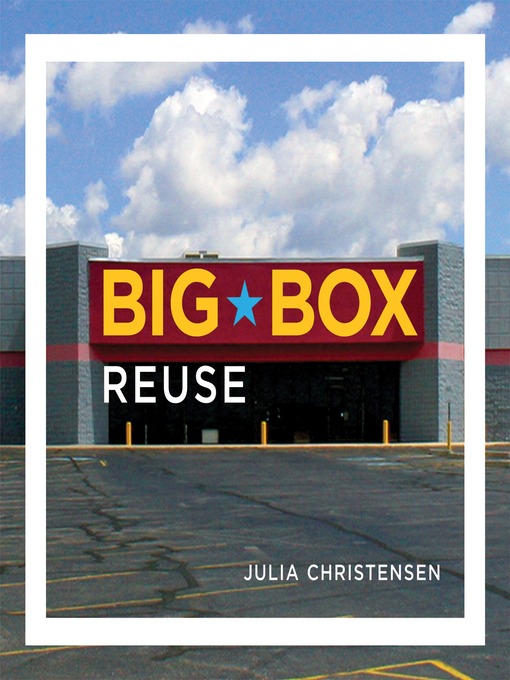What happens to the landscape, to community, and to the population when vacated big box stores are turned into community centers, churches, schools, and libraries?
America is becoming a container landscape of big boxes connected by highways. When a big box store upsizes to an even bigger box "supercenter" down the road, it leaves behind more than the vacant shell of a retail operation; it leaves behind a changed landscape that can't be changed back. Acres of land have been paved around it. Highway traffic comes to it; local roads end at it. With thousands of empty big box stores spread across America, these vistas have become a dominant feature of the American landscape. In Big Box Reuse, Julia Christensen shows us how ten communities have addressed this problem, turning vacated Wal-Marts and Kmarts into something else: a church, a library, a school, a medical center, a courthouse, a recreation center, a museum, or other more civic-minded structures. In each case, what was once a shopping destination becomes a center of community life. Christensen crisscrossed America identifying these projects, then photographed, videotaped, and interviewed the people involved. The first-person accounts and color photographs of Big Box Reuse reveal the hidden stories behind the transformation of these facades into gateways of community life. Whether a big box store becomes a "Senior Resource Center" or a museum devoted to Spam (the kind that comes in a can), each renovation displays a community's resourcefulness and creativity—but also raises questions about how big box buildings affect the lives of communities. What does it mean for us and for the future of America if the spaces of commerce built by a few monolithic corporations become the sites where education, medicine, religion, and culture are dispensed wholesale to the populace?

